How could I use data in this kind of CSV file? Or how could I print for example row 2 value for "inside" column and assign it to a property / entity?
I have this kind of file I got from excel file converted to Numbers, I'd like to grab data for each column and use them.
The original CSV file opened in numbers:
The console output I got:
Using this methods:
func readDataFromCSV(fileName:String, fileType: String)-> String!{
guard let filepath = Bundle.main.path(forResource: fileName, ofType: fileType)
else {
return nil
}
do {
var contents = try String(contentsOfFile: filepath, encoding: .utf8)
contents = cleanRows(file: contents)
return contents
} catch {
print("File Read Error for file \(filepath)")
return nil
}
}
func cleanRows(file:String)->String{
var cleanFile = file
cleanFile = cleanFile.replacingOccurrences(of: "\r", with: "\n")
cleanFile = cleanFile.replacingOccurrences(of: "\n\n", with: "\n")
// cleanFile = cleanFile.replacingOccurrences(of: ";;", with: "")
// cleanFile = cleanFile.replacingOccurrences(of: ";\n", with: "")
return cleanFile
}
SOLUTION thanks to Jens Meder
using
func csv(data: String) -> [[String]] {
var result: [[String]] = []
let rows = data.components(separatedBy: "\n")
for row in rows {
let columns = row.components(separatedBy: ";")
result.append(columns)
}
return result
}
in viewDidLoad
var data = readDataFromCSV(fileName: kCSVFileName, fileType: kCSVFileExtension)
data = cleanRows(file: data!)
let csvRows = csv(data: data!)
print(csvRows[1][1]) // UXM n. 166/167


